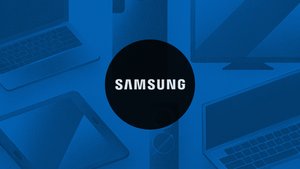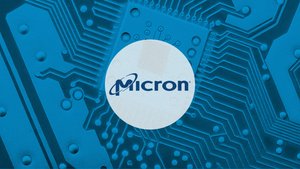
Samsung: Undervalued Memory Leader

Samsung stands as the dominant force in the global memory semiconductor industry, holding the largest market share in both DRAM (Dynamic Random-Access Memory) and NAND flash memory. With a commanding presence of over 40% in the DRAM market and approximately 35% in the NAND flash market, Samsung far surpasses its closest competitors, SK Hynix and Micron Technology. This leadership is a result of its technological superiority, vertically integrated supply chain, and aggressive investments in research and development (R&D).
Market Leadership and Competitive Advantage
Samsung’s ability to outperform rivals across market cycles stems from several key advantages:
- Manufacturing Scale
- Samsung operates some of the world’s most advanced semiconductor fabrication plants (fabs), enabling high production yields and lower per-unit costs.
- The company has invested heavily in next-generation DRAM (DDR5, HBM3E) and NAND (176-layer V-NAND, QLC/PLC NAND), ensuring a steady lead in innovation.
- Its Pyeongtaek and Xi’an fabs contribute significantly to global supply, giving it the flexibility to adjust production based on market demand.
- Advanced Process Technology
- Samsung is at the forefront of EUV (extreme ultraviolet) lithography for DRAM production, allowing for denser, more efficient memory chips.
- In NAND, its 3D V-NAND technology leads the industry, enabling higher storage capacity with lower power consumption.
- Cost Efficiencies and Vertical Integration
- Unlike competitors who rely on third-party foundries, Samsung benefits from in-house production of memory wafers, packaging, and testing, reducing overall costs.
- The company’s economies of scale give it a pricing advantage, allowing it to withstand downturns better than smaller competitors.
| Company | Market Cap | Industry | |||
|---|---|---|---|---|---|

|
Samsung Electronics Co Ltd
KRX:005930
|
$261.2B | Technology | ||
Outperformance Across Market Cycles
The memory industry is historically cyclical, with alternating periods of oversupply and demand shortages. However, Samsung has demonstrated resilience and strategic agility in managing these fluctuations:
- During downturns, Samsung strategically reduces production to prevent oversupply, stabilizing prices more effectively than competitors.
- During upcycles, it leverages its massive production capacity to quickly meet surging demand, capturing a larger share of industry profits.
- The company's ability to invest aggressively during downturns ensures that it emerges stronger when the market rebounds, widening its lead over competitors.
| Company | Profitability Score | Market Cap | Industry | ||
|---|---|---|---|---|---|

|
Samsung Electronics Co Ltd
KRX:005930
|
52
/ 100
|
$261.2B | Technology | |
Diversified revenue streams
One of Samsung’s biggest advantages over its competitors in the semiconductor industry is its diversified business model. While companies like Micron and SK Hynix rely almost exclusively on memory sales, Samsung operates across multiple technology sectors, including consumer electronics, smartphones, and display panels. This broad revenue base helps the company maintain financial stability, even when certain segments of the business experience downturns.
For example, during periods of declining memory prices, Samsung’s smartphone division, led by its Galaxy lineup, continues to generate substantial revenue. As one of the world’s largest smartphone manufacturers, Samsung benefits from high global demand for premium and mid-range devices. The company’s ability to integrate its own memory chips and displays into its mobile products also helps maintain profitability and cost efficiency.
Additionally, Samsung’s display division plays a crucial role in balancing revenue fluctuations. The company is a leading supplier of OLED and AMOLED panels, which are used in not only its own smartphones but also in devices from major competitors like Apple. With the growing adoption of OLED screens in smartphones, laptops, and even automotive displays, this segment remains a strong contributor to Samsung’s overall revenue.
Another key stabilizing factor is Samsung’s consumer electronics division, which includes TVs, home appliances, and smart devices. As a global leader in the television market, Samsung continues to generate consistent cash flow from its QLED and OLED TV sales. Even in economic downturns, demand for consumer electronics remains relatively stable, providing Samsung with a cushion against cyclical downturns in the semiconductor business.
Long-Term Tailwinds from AI and Edge Computing
The rise of edge computing, IoT, and automotive AI is further expanding memory demand. Samsung’s leadership in LPDDR (low-power DRAM) and embedded storage solutions positions it as a key supplier for next-generation devices, including autonomous vehicles and smart consumer electronics.
| Company | Intrinsic Valuation | Market Cap | Industry | ||
|---|---|---|---|---|---|

|
Samsung Electronics Co Ltd
KRX:005930
|
34% Undervalued
|
$261.2B | Technology | |
Samsung’s vertically integrated supply chain allows it to maintain cost leadership in the memory industry. From in-house production of wafers to advanced packaging and testing, the company’s ability to control every aspect of production gives it a competitive edge in pricing, efficiency, and profitability.
Samsung consistently invests heavily in semiconductor research and development, allocating billions of dollars annually to maintain its technology leadership. The company’s focus on extreme ultraviolet (EUV) lithography and 3D NAND stacking positions it ahead of competitors in the race for higher-density, more power-efficient memory solutions.
Conclusion
Given its dominant position, ongoing recovery in the memory cycle, and its key role in AI-driven growth, Samsung remains a compelling investment. Its undervaluation presents an opportunity for long-term investors to capitalize on a global leader that is set to benefit from secular trends in AI, cloud computing, and next-gen storage technologies.

Dr. Viktor Kalm is a Senior Investment Analyst at Alpha Spread. He has over seven years of experience in corporate finance, specializing in financial modeling, business valuation, and strategic planning services. Previously, as a hedge fund manager, he focused on private equity management, consistently delivering positive returns to his clients.

Dr. Viktor Kalm is a Senior Investment Analyst at Alpha Spread. He has over seven years of experience in corporate finance, specializing in financial modeling, business valuation, and strategic planning services. Previously, as a hedge fund manager, he focused on private equity management, consistently delivering positive returns to his clients.

































 You don't have any saved screeners yet
You don't have any saved screeners yet
